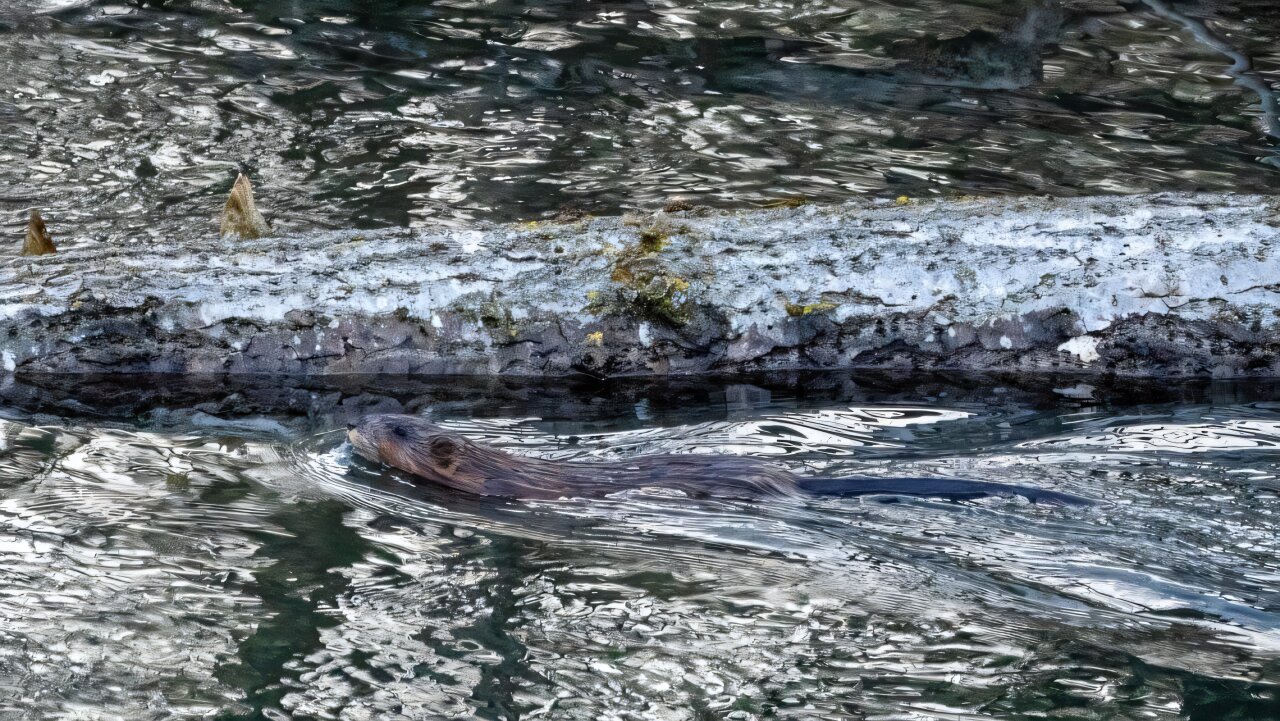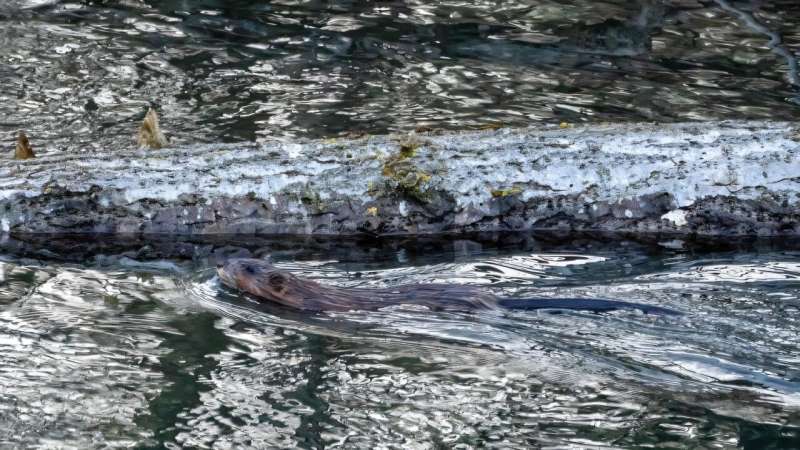

When an endangered species succeeds in repopulating its former habitat, the immediate reaction is one of joy. In the long term, however, its spread is often associated with conflict. One example is the beaver, a keystone species. Other keystone species include the wolf and the bison. These are animals that have an extraordinary impact on the ecosystems in which they live.
The reintroduction of such keystone species often restores important processes and ecosystem functions. However, beavers inevitably cause polarization between agriculture, forestry and nature conservation because of their strong influence on water bodies and river banks. Four researchers from the Leibniz Institute of Freshwater Ecology and Inland Fisheries (IGB) are bringing some color into the black-and-white debate.
Mr. Jeschke, you contributed to a recent study that used an online survey to investigate people’s perceptions of beavers in Germany. What did you find out?
We asked participants to tell us which emotions—interest, joy, anger, fear—they felt toward beavers and which habitats they considered to be acceptable for these animals. Of the nearly 1,500 respondents, approximately half were from the general public and the other half were from the agricultural and forestry sectors.
The results show that people care about beavers: Around 60% of respondents were interested or strongly interested in beavers. A significant 36% of respondents expressed positive sentiments towards beavers, while 44% felt anger.
There is a stark contrast between the views of people from different groups. The beaver is perceived positively by the majority of the general public, with only 25% expressing annoyance. However, in agriculture and forestry, it is perceived mainly negatively, provoking feelings of anger in 75% of respondents working in these sectors.
Irrespective of stakeholder groups, we also found regional differences, with participants from Bavaria—the federal state with the most beavers—having a more negative view of beavers than those from other regions in Germany, including the general public.
Were you surprised? And what do you conclude from this?
I wasn’t surprised by the results overall, which I think reflect the public debate on the beaver quite well. What did surprise me was the stark contrast between the social groups and the different federal states. There is a huge difference of opinion.
It was also interesting to see that the participants had different views on whether forests and urban green spaces are acceptable as beaver habitats. There was, on the other hand, agreement that beavers are acceptable in nature reserves, zoos and wildlife parks. Our results show that forward-looking beaver management and increased public engagement are essential for fostering positive coexistence between beavers and humans in Germany. This also applies to other keystone species.
Ms. Jähnig, some people see beavers as troublemakers. In your study, you define large freshwater animals such as beavers as ‘positive troublemakers’ that fulfill an important function. Exactly what benefit does their ‘trouble’ bring?
Large freshwater animals play a vital role in restoring the ecological complexity of freshwater ecosystems that have become homogenized due to human intervention. They do this by increasing the structural and biological diversity of these ecosystems. This may seem paradoxical, but random disturbance is desirable in nature and essential for functioning ecosystems.
Beaver construction is a prime example of this. Natural rivers, lakes and wetlands are highly dynamic ecosystems. They are affected by a variety of stochastic disturbances caused by changes in the water balance and animal activity. We often forget this because we no longer recognize or suppress these natural dynamics in our cultivated landscapes.
Take river regulation and fragmentation, for example. It is often assumed that a constant water level—as is the aim in waterways for navigation—is the best condition for all living creatures in the river, when the opposite is the case.
So should beavers be allowed to build?
In principle, yes, but it depends on what kind of landscape use we are talking about. We live in cultural landscapes that have been shaped and used by humans. That’s why I understand foresters and farmers who are annoyed by the activities of beavers.
But we can make targeted use of beavers in restoration projects to help revitalize natural areas and increase biodiversity. For example, beavers have significantly improved water quality and biodiversity in sandy lowland rivers that had been severely degraded by human use.
They are therefore a cost-effective accelerator for restoration. But again, the impact on other species, such as fish, needs to be taken into account in planning.
Mr. Wolter, as a fish ecologist, you deal with fish communities in running waters. Ms. Jähnig has already touched on this. What can the spread of beavers mean for the fish in the river?
Beavers modify their habitat by building dams, for example, so that the entrances to their lodges are under water. These beaver dams affect the hydrology and therefore the fish fauna, to the detriment of current-loving and migratory fish species and to the benefit of still water species. In natural waters, fish and beavers have long coexisted.
Human intervention in aquatic ecosystems and climate change have increased the pressure on fish communities. Lowland streams with trout have largely disappeared from our cultural landscape, so every stream altered by a beaver dam represents a serious loss for the regional aquatic fauna.
So what can be done for fish in beaver streams?
Give rivers more space, revive floodplains and side channels, stabilize water retention in the landscape, and prevent droughts. If beavers can find water deep enough to keep their lodges from drying out, they are not dependent on damming, and river fish and beavers can coexist very well, which would be in line with the good ecological status of the European Water Framework Directive.
In addition, the restoration of small freshwater ecosystems such as lowland trout streams promotes water retention in the landscape to the benefit of beavers and river fish species.
Talking of water retention, Ms. Warter, you study water flows in the landscape, for example in the Demnitzer Mühlenfließ in Brandenburg, where IGB maintains a field station. Beavers are also active there. What influence do they have on the water balance?
Water scarcity is a major problem in Brandenburg. In the future, we will have to do everything we can to keep rainfall in the landscape. Beavers slow down the flow of water in watercourses and allow more of it to infiltrate into the groundwater.
Our working group, led by Professor Dörthe Tetzlaff, has, for example, analyzed data from the Demnitzer Mühlenfließ over the last 30 years, looking at water flows before and after the restoration and reintroduction of beavers.
Before the year 2000, less than 5% of the precipitation flowed into the groundwater. Since then, the rate of groundwater recharge from rainfall has almost doubled, but is still low at around 10% of annual rainfall.
But there have been other benefits too: The rewetting and restoration of the moorland north of the Demnitzer Mühlenfließ, facilitated by the beaver, has led to a longer retention time of the water in the water system and a reduction in daily water level fluctuations, i.e., a “dampened” runoff behavior. This is particularly beneficial during dry periods, as the water bodies hold water for longer. We have also seen an improvement in water quality.
So is the Brandenburg beaver a success story?
The beaver cannot restore a stressed water balance on its own, but is itself affected by climatic extremes. Since the extreme drought in 2018, beaver activity on the Demnitzer Mühlenfließ has declined. The trend toward more extreme water level fluctuations and periods of drought have severely restricted their functional habitat. Only the moorland areas in the north and a wetland area in the south have water throughout the year.
Provided by
Forschungsverbund Berlin e.V. (FVB)
Citation:
Q&A: Experts discuss the beaver, a controversial mammal (2024, October 18)
retrieved 18 October 2024
from https://phys.org/news/2024-10-qa-experts-discuss-beaver-controversial.html
This document is subject to copyright. Apart from any fair dealing for the purpose of private study or research, no
part may be reproduced without the written permission. The content is provided for information purposes only.